The missing pieces toward universal oxygen access
Medical oxygen is an essential treatment for people struggling to breathe—across countries, ages, and diseases—but its access has long been neglected in health systems planning. Achieving “health for all” is not possible without oxygen access.
Oxygen is an essential medicine and a key treatment for a wide range of acute and chronic conditions, including pneumonia and other respiratory diseases, obstetric emergencies, premature birth, surgery, and chronic lung conditions. As such, oxygen access is vital to ensuring universal health coverage.
This page shines a light on a number of ‘missing pieces’ that are critical drivers to ensuring universal oxygen access—ensuring it is equitable, high-quality and affordable for all who need it. These campaign assets are un-branded and available to download and use for all advocates. Help us amplify the importance of oxygen access on social media and call on global and national stakeholder action on this critical health agenda. When using these assets, please tag @PATHdrugdev and use the suggested hashtags.
Primary hashtag: #OxygenAccess
Secondary hashtags: #EveryBreathCounts, #WorldOxygenDay, #InvestInOxygen
Key partner handles to tag, as relevant: @WHO, @UNICEF, @Unitaid, @GlobalFund, @AfricaCDC, @Pandemic_Fund, @NCDAlliance
Oxygen for noncommunicable diseases (NCDs)
Chronic respiratory diseases are expected to increase 20 percent globally by 2050. With most patients living in low- and middle-income countries, the result is deepening broader inequities in medical oxygen access.
Expanding access to oxygen is essential to addressing this growing crisis and appropriately managing other NCDs.
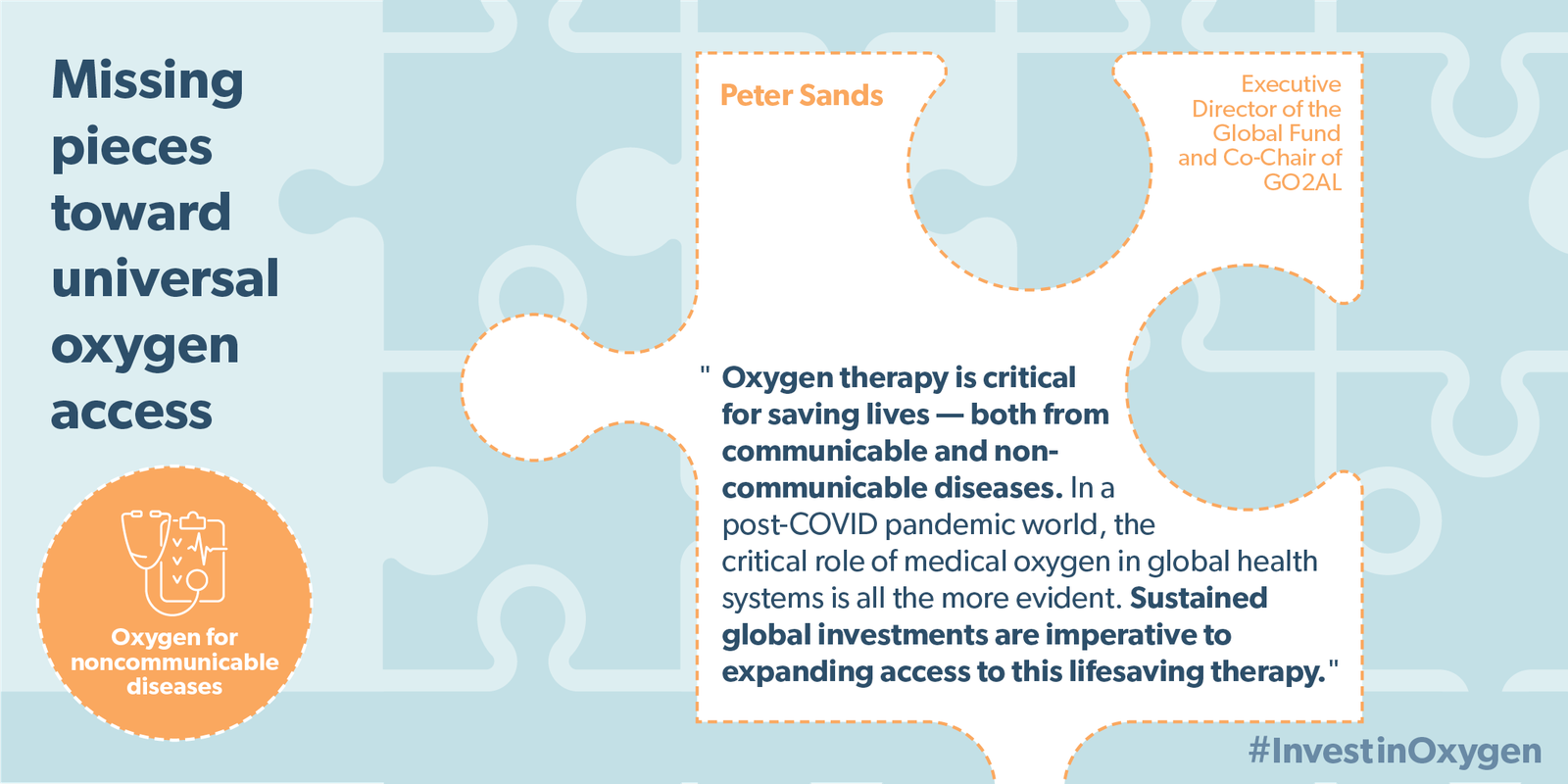
Additional resources:
- Medical oxygen—a missing piece in the noncommunicable diseases agenda, PATH
- Access to Medical Oxygen for NCDs, The Lancet Global Health Commission for Medical Oxygen Security
- Access to medical oxygen—an essential medicine needed by millions—cannot be overlooked in the global noncommunicable disease agenda, Global Oxygen Alliance
- Getting long-term oxygen therapy right, The Lancet Global Health Commission for Medical Oxygen Security
Oxygen for the care of small and sick newborns
Without pulse oximetry, medical oxygen, and well-trained nurses, many sick and small newborns cannot survive.
These should all be consistently available in every newborn unit and labor ward, where they can also aid in safe childbirth, the prevention of stillbirth, and the management of babies with congenital conditions.
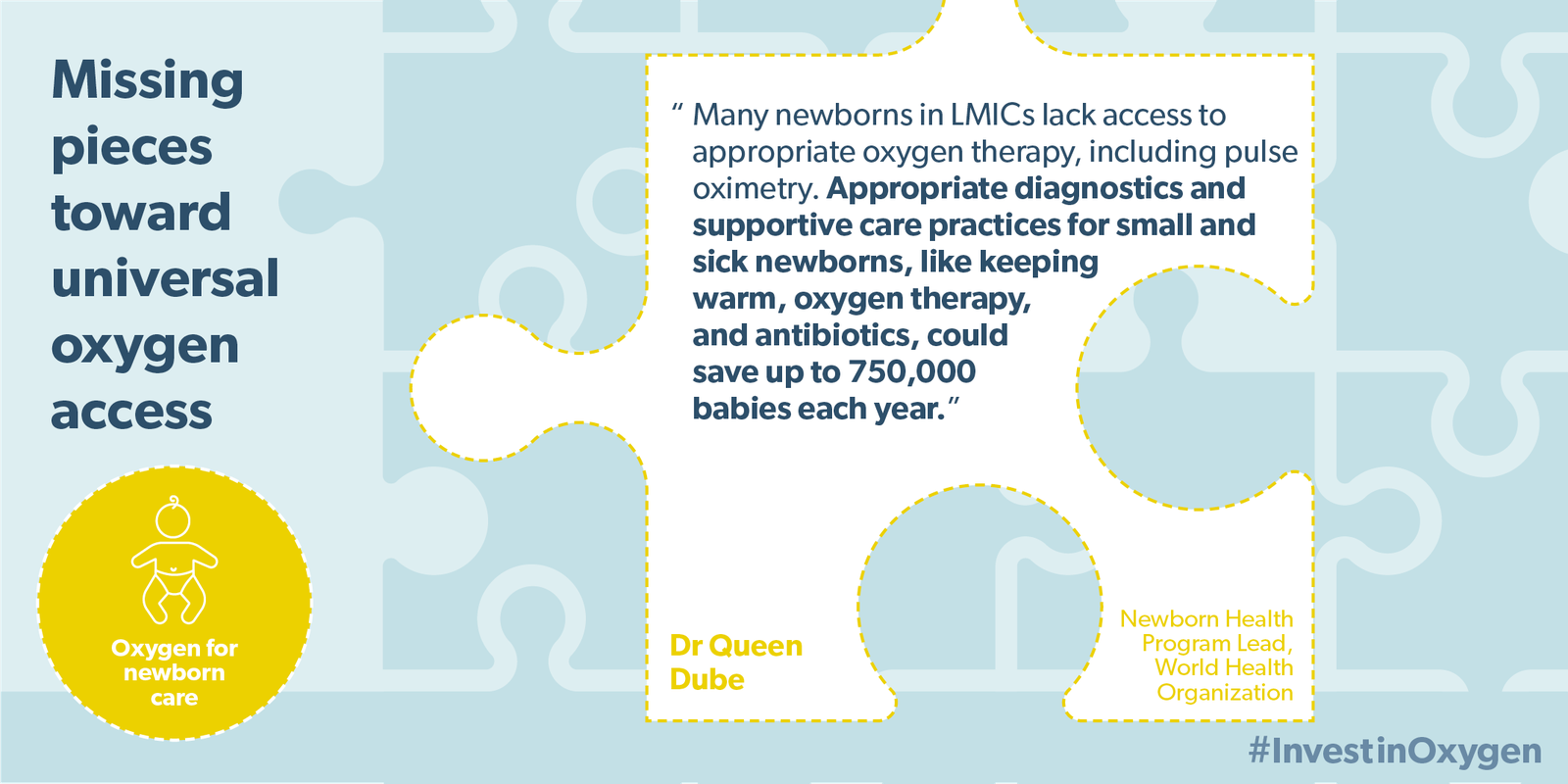
Additional resources
- Statement on International Neonatal Nurses Day, The Lancet Global Health Commission for Medical Oxygen Security
Oxygen and pandemic prevention, preparedness, and response (PPPR)
According to expert forecasts, there is a 66 percent chance of another COVID-like respiratory pandemic with a death toll of more than 10 million people in the next 25 years.
Pulse oximetry and medical oxygen must be part of all agendas and actions that aim to strengthen PPPR.
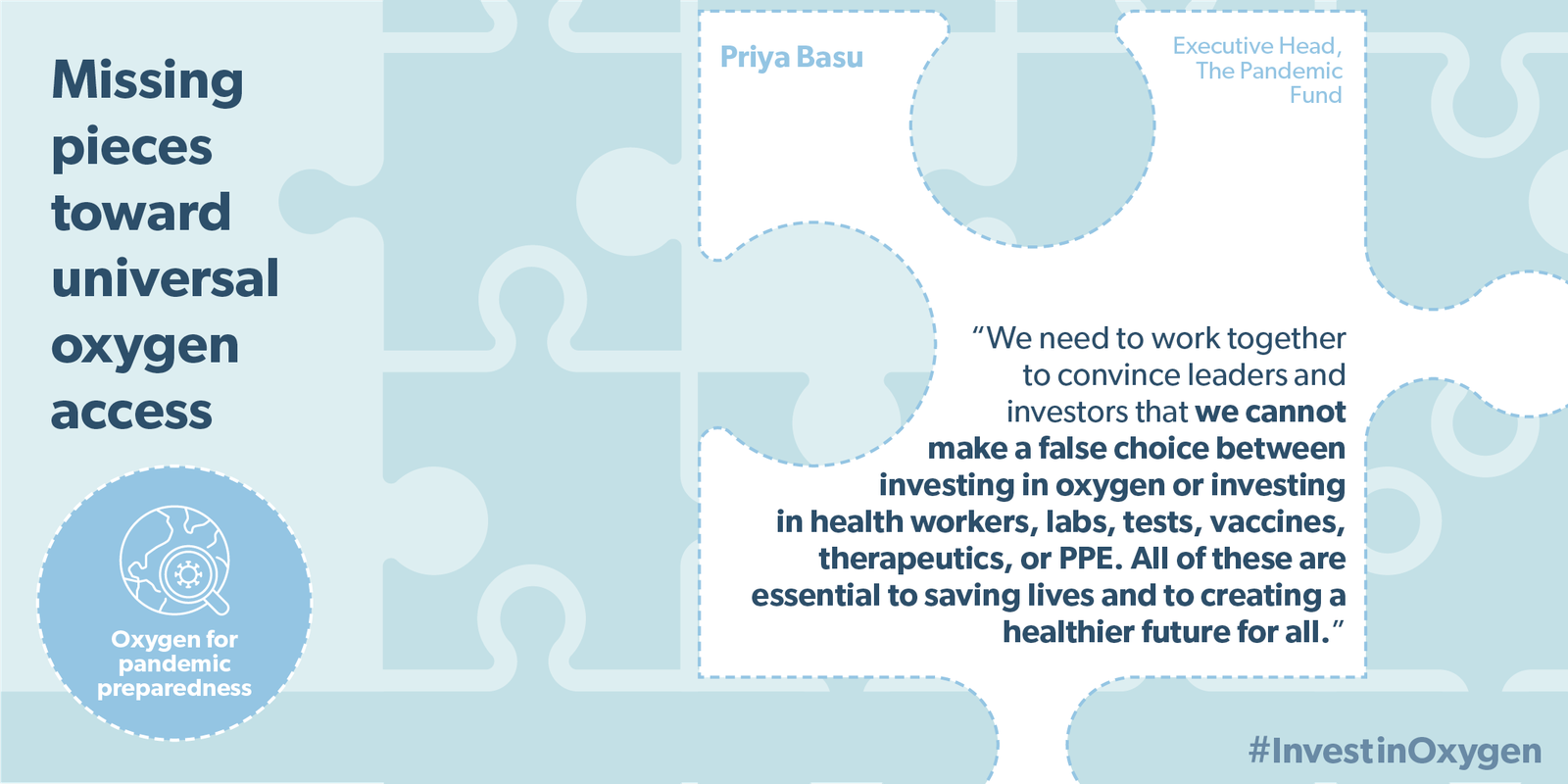
Additional resources
- Medical oxygen and pulse oximetry financing: The Pandemic Fund opportunities, PATH
- Opinion: Ensuring oxygen access is essential to achieving health for all, Dr. Philippe Duneton, Nikolaj Gilbert, Ryo Nakamura
- The Pandemic Fund
Oxygen innovations
Oxygen innovations can improve access to this lifesaving therapy.
From solar power to new technologies to market strategies, innovation can be a powerful tool to fortify health systems in low- and middle-income countries and ensure oxygen access for all who need it.
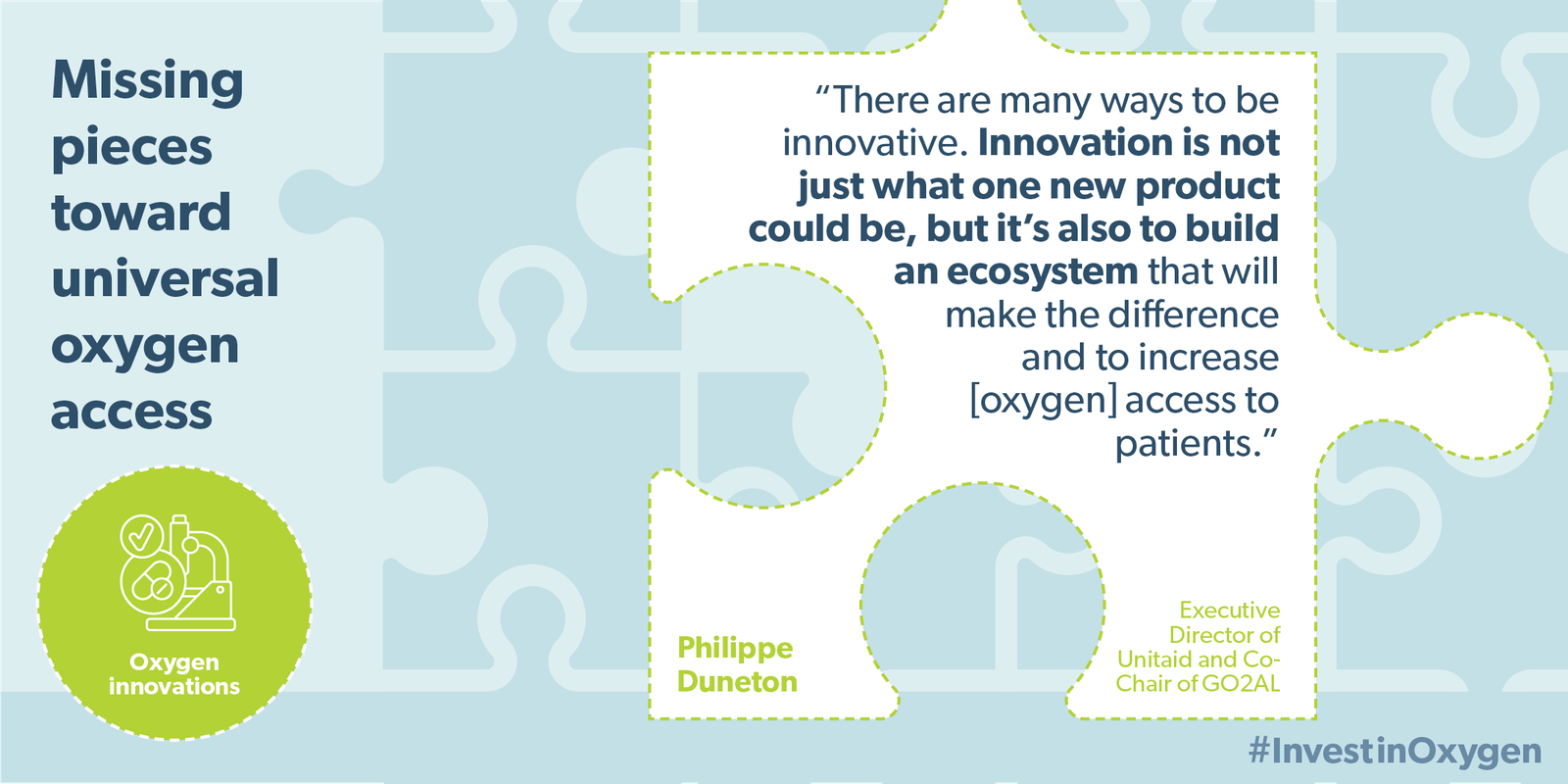
High-quality biomedical engineers
Not having enough biomedical engineers or the technologies to treat patients remains a reality in many low- and middle-income countries.
Improved training, data, and equipment management are some ways to strengthen their capacity to keep oxygen flowing.
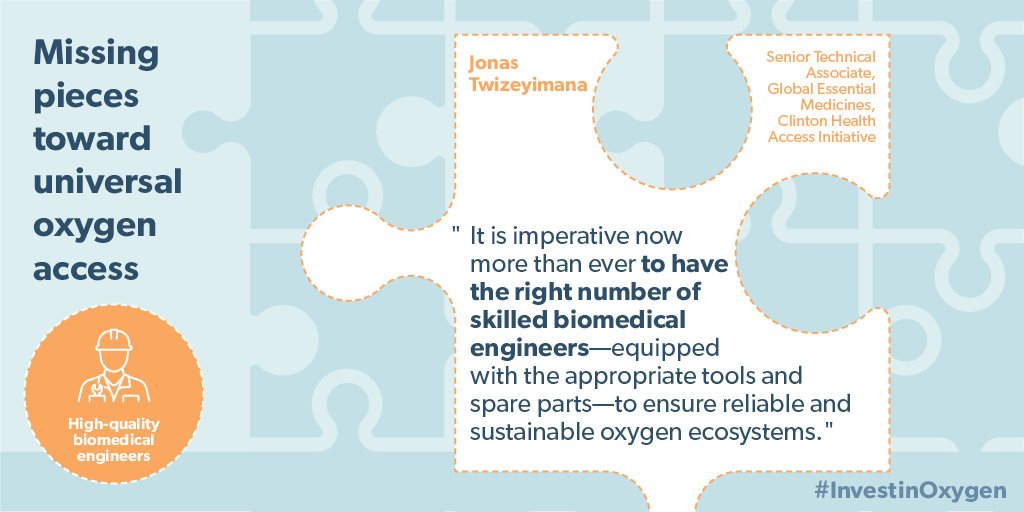
Additional resources
- Biomedical Engineers: They Make it Work!, Every Breath Counts coalition
Financial protection from high oxygen costs
High medical oxygen costs in low- and middle-income countries contribute to prohibitive out-of-pocket costs for patients and families.
Building local production and covering oxygen access under standard care costs are just a start to make oxygen affordable.
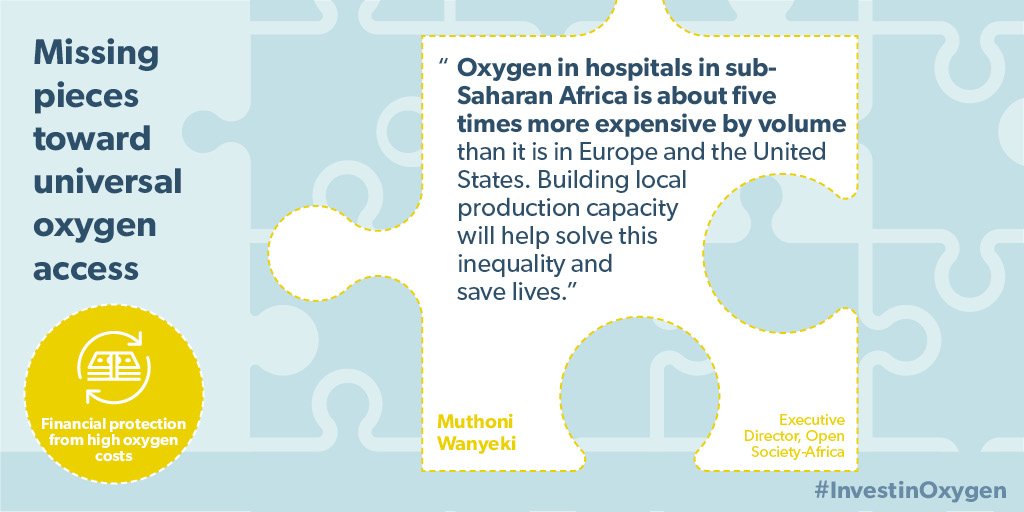
Additional resources
- Medical oxygen and Universal Health Coverage, Every Breath Counts coalition
Pulse oximeters for all skin tones
Pulse oximeters, devices that measure oxygen saturation in the blood (SpO2), offer a lifeline to those who need medical oxygen to breathe but do not perform accurately on darker skin tones.
This needs to be remedied to ensure equitable respiratory care for all who need it.
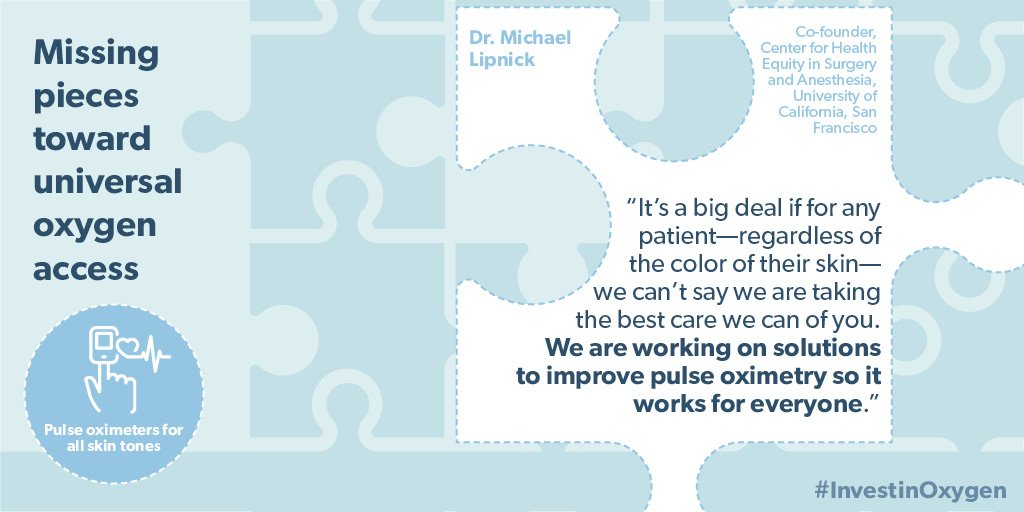
Inclusion of oxygen in global agendas
The 2023 World Health Assembly resolution on medical oxygen access reaffirms the critical role of oxygen in building resilient health systems, but it is missing from declarations on universal health coverage, pandemic preparedness and response, and many other global agendas.
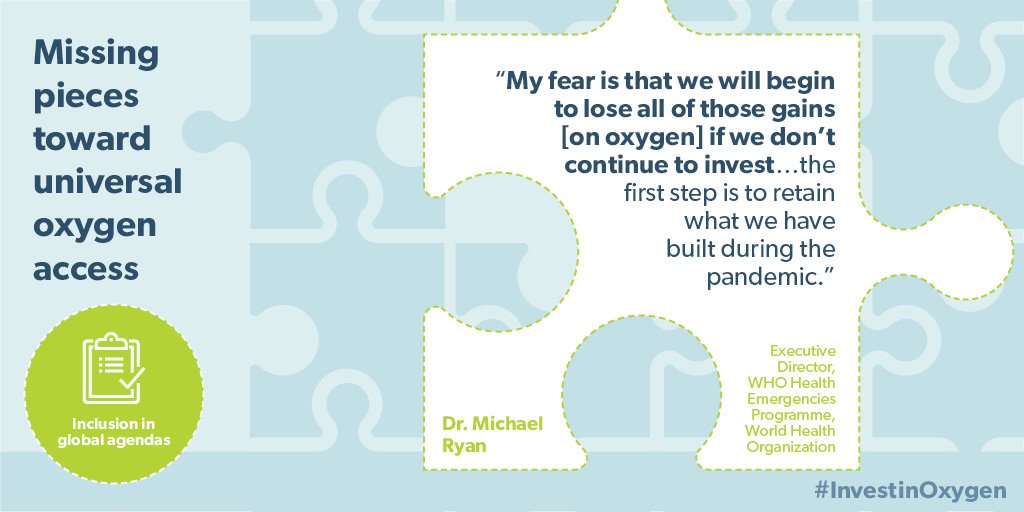
Additional resources
- Medical Oxygen — Essential for saving lives today and tomorrow, Global Oxygen Alliance
Oxygen is essential for those struggling to breathe across populations and health conditions.
Addressing these critical gaps will be essential to achieving universal oxygen access toward universal health coverage.